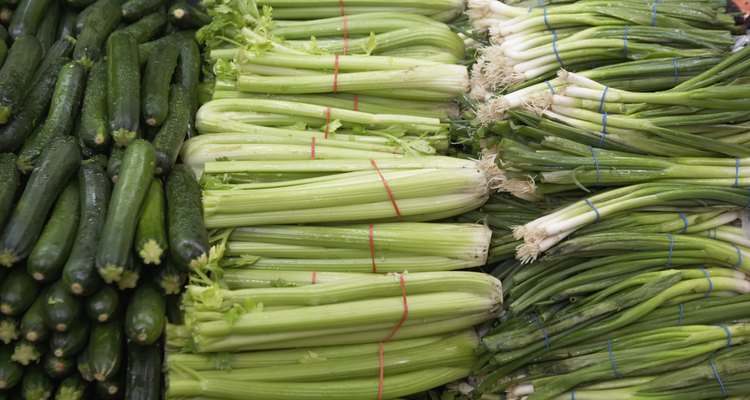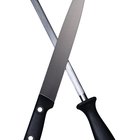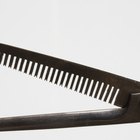
Jack Hollingsworth/Photodisc/Getty Images
Celery's juiciness, crisp texture and fresh flavor make it a useful and versatile ingredient in both cooked and uncooked dishes, including soups, stews and salads. Its only drawback from the culinary standpoint is the set of tough "strings" running down the back of each rib of celery. These can be left on or easily removed at the cook's discretion.
Celery's Versatility
Celery, like onions, mushrooms and garlic, is an ingredient that's valued for its ability to make other foods taste better. The French combine it with onions and carrots to make mirepoix, an aromatic mixture they use to provide a balanced base flavor in soups and sauces. Asians use it in stir-fries, and finely chopped celery is often added to salads and sandwich fillings. When it's cut finely, the stringy portion of celery is unobtrusive. However, when celery is served in larger pieces or used in elegant soups, cooks often choose to remove the strings.
Peeler
Arguably the easiest way to remove the strings from a rib of celery is with a hand-held vegetable peeler, especially the so-called "Swiss" or "Y" peeler. Hold the celery firmly and position the peeler's blade at the base of the stalk, where the strings begin. Pull the peeler the length of the celery, stripping away a fine layer of skin along with the strings. Begin a second strip beside the first, and repeat until the celery is stringless. If you have multiple peelers, try them in turn and use the one that takes the thinnest strip.
Mandoline Slicer
A mandoline slicer works like a knife, but in reverse. The blade is permanently mounted in a frame, and you move the food instead. Lower-cost mandoline slicers have fixed blades that make slices of predetermined thickness, but adjustable mandolines can also be very affordable. If you own an adjustable mandoline, set it for a very thin slice and slide the celery over the blade, string side down. Rotate the celery and repeat the slicing motion, until the stalk is stringless. Always use the safety hand guard with your mandoline, because the blades are sharp and can cause a serious injury.
Paring Knife
A paring knife requires a little more dexterity than a peeler or mandoline, but it's still not especially challenging. Starting at the root end of your celery, slide the knife blade under the ends of the strings. Wiggle the knife blade under the strings, so that about 1/4 inch of strings are on the blade. Press your thumb down firmly to hold them in place, and gently lift up and pull the strings back the length of the celery stalk. They'll pull out, leaving the skin behind. Repeat until all the strings are removed. This method wastes less of your celery and looks neater.
Related Articles

How to Mince Celery

How to Boil Celery

How to Use a Vegetable Peeler

How to Grate Carrots

How to Shred Daikon

How to Grow Shaggy Hair

How to Twist & Cut Hair

How to Trim Arm Pit Hair

How to Cut Cabbage Very Finely

How to Use a Bird's Beak Knife

How to Remove the Stitching From a Polo ...

How to Julienne Basil

What Type of Knife to Carve Prime Rib?

How to Wear a Lululemon Headband

What Is a Slide Hair Cut?

How to Pluck Your Eyebrows With Strings

How to Shred Brussels Sprouts

Types of Hair Scissors

How to Grow Hair Back After Shaving ...

How to Trim Overly Long Eyebrow Hairs ...
References
- Professional Cooking; Wayne Gisslen
- On Food and Cooking: The Science and Lore of the Kitchen; Harold McGee
- Recipe Tips: Celery
Writer Bio
Fred Decker is a trained chef and prolific freelance writer. In previous careers, he sold insurance and mutual funds, and was a longtime retailer. He was educated at Memorial University of Newfoundland and the Northern Alberta Institute of Technology. His articles have appeared on numerous home and garden sites including GoneOutdoors, TheNest and eHow.
Photo Credits
Jack Hollingsworth/Photodisc/Getty Images